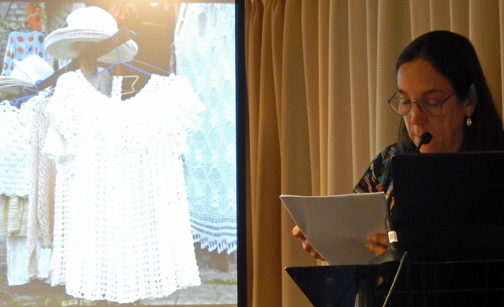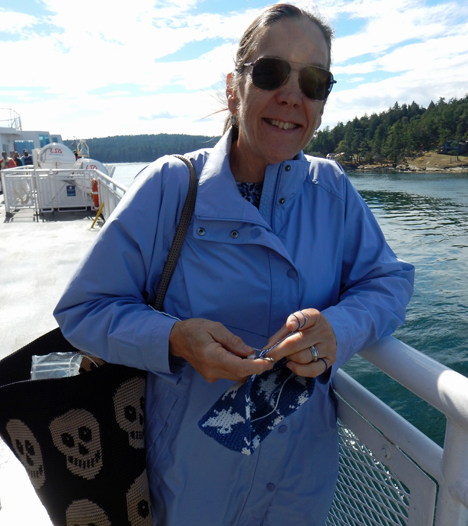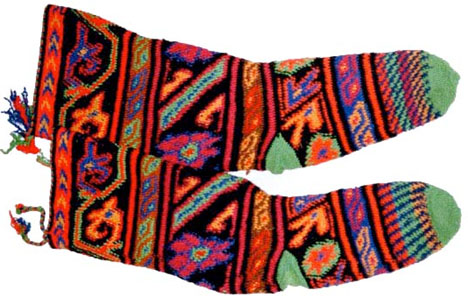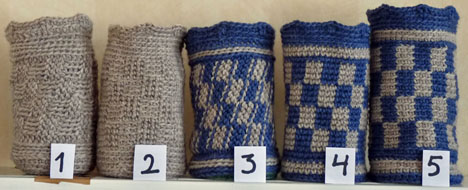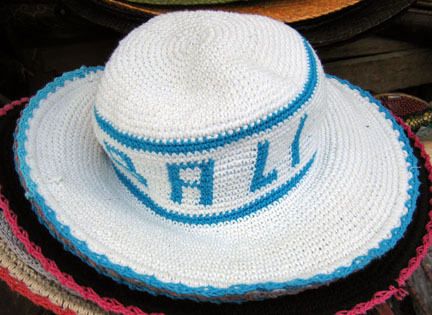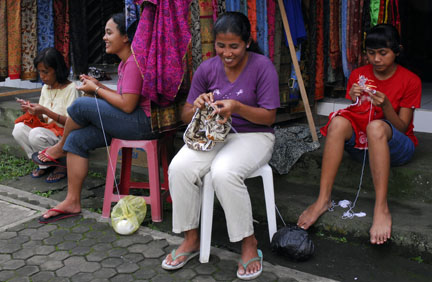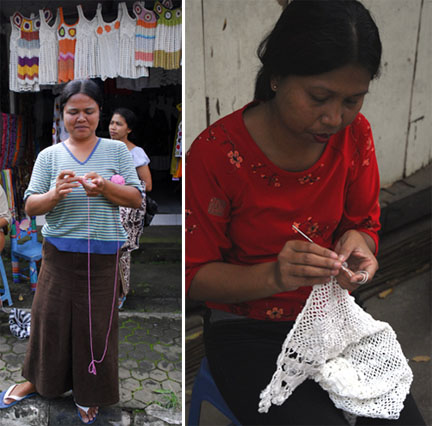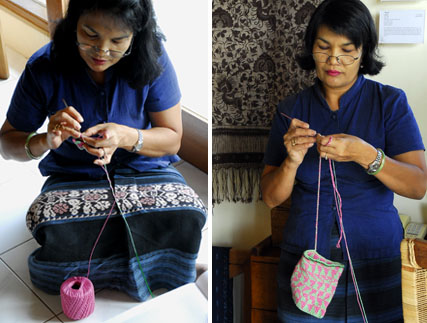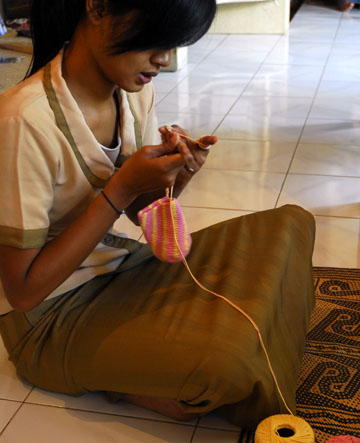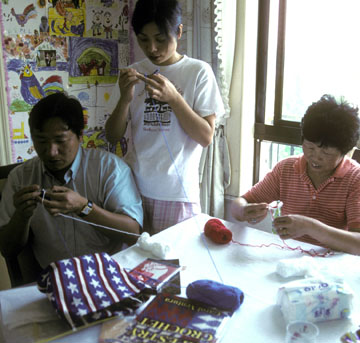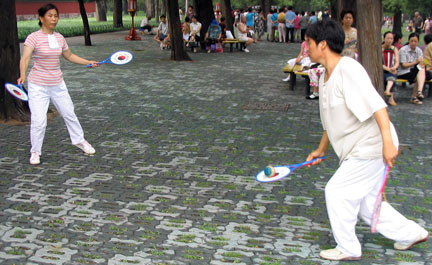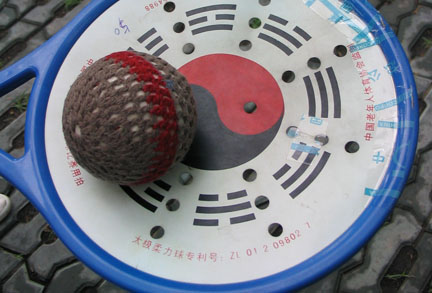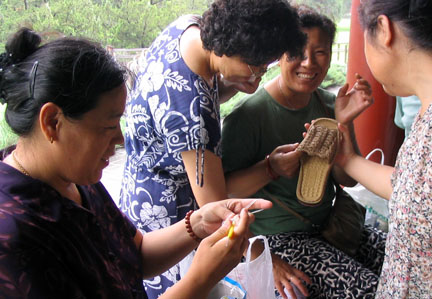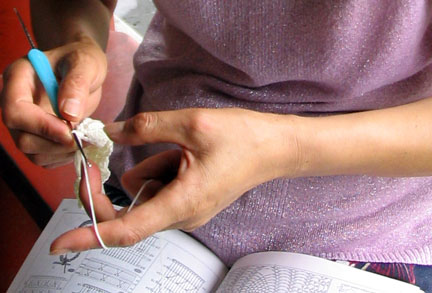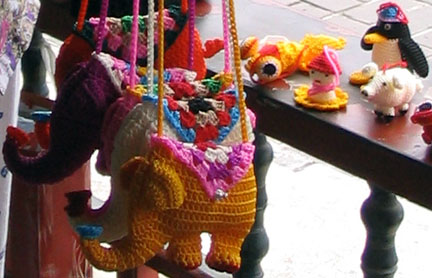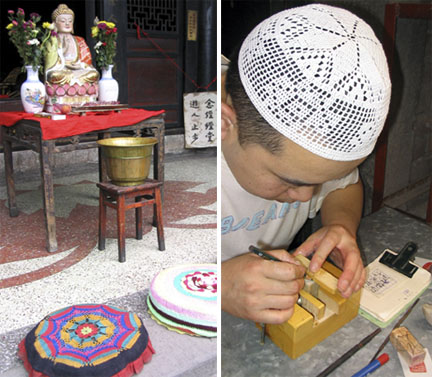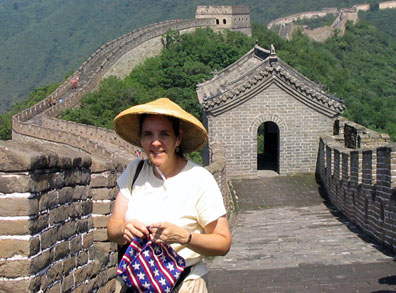The internet has helped me meet so many interesting people, including Harry Khan (aka Usman Ali Khan), who is from Abbottabad, Pakistan. We’ve been corresponding online about
backstrap weaving and tapestry crochet for several years. Then, as now, he’s adventurous, creative, and very enthusiastic about life and fiber art. He explains his introduction to crochet best, so I’ll let him tell you in his own words:
“I was first introduced to crochet at a very young age when I saw my grandmother crocheting. As time went on, I forgot about crochet altogether as crochet is not considered a man’s forte here. It’s mainly considered a woman’s hobby and even with them, crochet is not as popular as it used to be in the past.”
“Crochet items continued to fascinate me but I was still not provoked enough to learn it, until I came across The Blandford Book of Traditional Handicrafts, that had a chapter on crochet and a gallery full of projects that could be made with various handicrafts. This was also my introduction to macrame and a lot of other crafts. But although I wanted to learn crochet, I found it difficult to follow the book’s instructions.”
“Then finally I decided that I should learn from a person and who else was more experienced than Grandma? So I finally learned the basic stitches from her. She taught me how to make a chain and then got me started on single and double crochet.”
“After making small samplers for practice, I came back home and searched online for crochet and saw many different patterns and instructions and started making granny squares and doilies. My internet searches for crochet finally led me to www.tapestrycrochet.com and for the first time I was introduced to tapestry crochet. It looked easy but as I started to make a sample I was very confused as how to turn back after completing one row in flat tapestry crochet, but after much contemplating and help from Dr.Carol Ventura, I was finally able to make the rows from left to right and right to left.”
“The first tapestry crochet I made was the Wrist Warmer in 2003. I always take this wrist warmer with me whenever I go for hiking in the Northern areas. Somehow they seem to belong among the high mountains.”
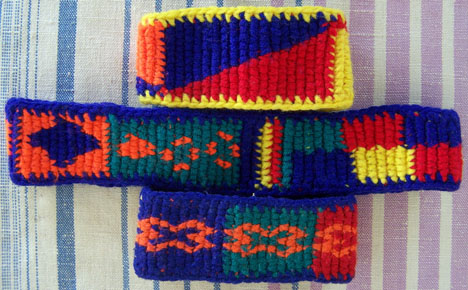
Harry’s acrylic Wrist Warmers, 2003.
“After experimenting with flat tapestry crochet, I was hooked onto round TC after seeing the very beautiful potholders on the Splynda crochet site, which is no longer online.”
“I liked the idea and tried my hand at making pot holders. I made the rocky mountain pattern from her site.”
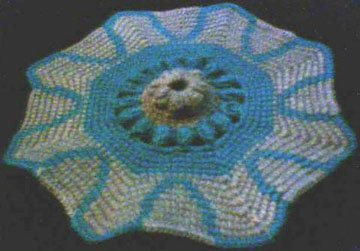
Harry’s Rocky Mountain from a Splynda pattern.
“After that I tried my hand at making a pattern. So I made the dogs facing each other graph, all the while preparing for my annual exams 🙂 I liked the idea of making a net in the centre, surrounded with solid tapestry crochet.”
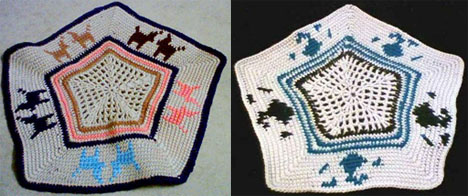
Harry’s cotton pot holders.
“The Llama came as an inspiration and while experimenting with designing the graph, it changed into somewhat of a mythological animal.”
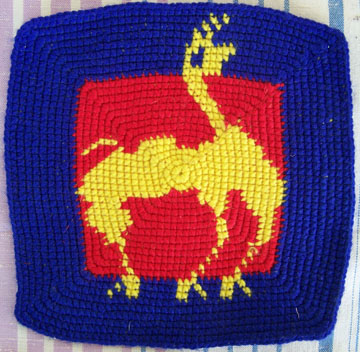
Harry’s acrylic Llama.
“In 2004 I made my first tapestry crochet cap. The pattern of the triangles on the side came from Indian caps which have multi colored sides, too. I first made a flat tapestry crochet strip long enough to go around the head. Then for the upper portion I tapestry crocheted in rounds and made it large enough to cover the head. After that, I joined the two pieces with single crochet and sewed a lining on the inside of the cap.”
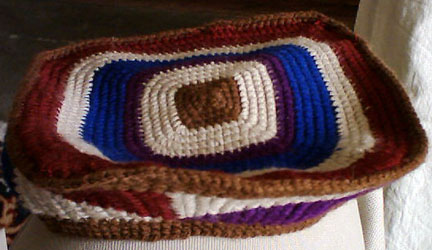
Harry’s first tapestry crochet Cap, 2004.
“After that I grew bold and started making another cap with a more detailed motif on the sides using flat TC. I used the flower motif from the Afghani cross stitch cushion in the center for the other piece.”
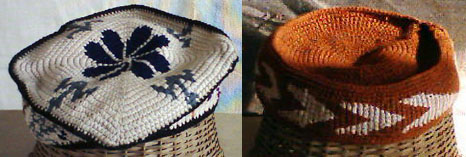
More of Harry’s Caps.
“It was in May 2004 that I started my TC pillow. I was inspired by the Afghani cross stitch pillows (below) and their variety of colors and motifs and planned in my mind how to convert them into TC.
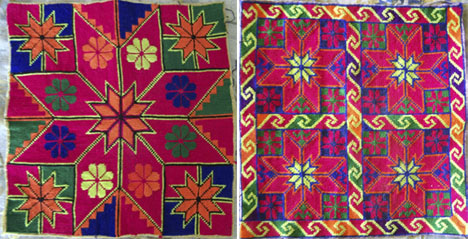
Cross stitch pillow covers from Afghanistan.
“I started it at my hostel, while the summer was at it’s peak and the temperature was above 40 degrees Celsius (104 degrees F). The wool was tough to handle and it wasn’t easy as the pillow grew in size. It took about two weeks working in the afternoons to finish it.”
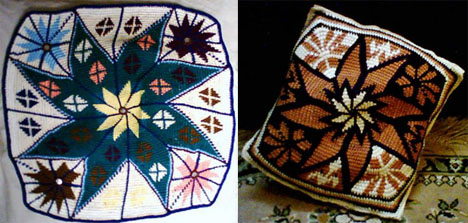
Harry’s acrylic Pillows, based on the Afghani designs.
“In the end, I would like to Thank Dr. Carol who encouraged me at every step to learn tapestry crochet (and backstrap weaving as well) and helped me with her advice and books all these years.”
“I would like to say that with patience and practice everyone can learn tapestry crochet but the important thing is to learn the art of making lives as colorful as the colorful tapestry crochet.”
Harry’s Crafty Threads blog and his Flickr pages showcase more of his eclectic fiber art. And for you Ravelers out there, he’s Harrykhan. He has been away from tapestry crochet for a while, but says, “I intend to finish this piece (below) now which is again based on the same Afghani cross stitch motifs.”
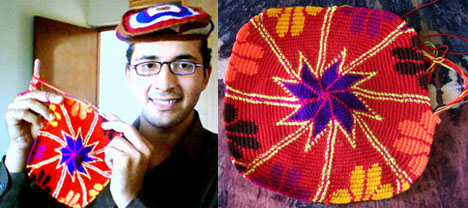
Harry and his WIP tapestry crochet pillow cover.
So what else does Harry do? Well, he’s only one test away from being Dr. Harry. When I told my young daughter years ago that I was studying for my doctorate, she asked if that meant I could take care of her when she was sick. I explained that I was going to be a different kind of doctor – but that I could still take care of her. Harry, on the other hand, will be the type of doctor that takes care of sick people. Based on what I’ve learned about Harry, I suspect his waiting room will be a real visual treat!
